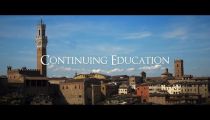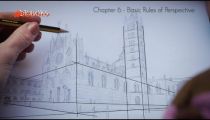Imagination Takes Flight
Dante’s Commedia is peppered with not only people who lived during or prior to his lifetime, but also with mythological creatures. In my previous post on Dante, I emphasized how he used his Commedia—particularly the first part, Inferno—to make political statements and condemn those who wronged him. One aspect I didn’t highlight as much was his use of mythology. This comes in during one of my favorite scenes in the whole Commedia.
In Canto XVII of Inferno, Dante and Virgil reach the end of the seventh circle of Hell and must be transported down to the eighth and ninth circles by Geryon. In Greek mythology, Geryon was a giant on the island Erytheia, often depicted as having three heads (sometimes three bodies as well, and four wings). He comes in during the tenth Labor of Hercules, in which the hero must steal Geryon’s cattle for Eurystheus.
Geryon takes a dramatically different role in Inferno. Even his physical appearance is different. Dante describes him as having an honest face, a reptilian body, and a scorpion’s tail. Here he is an image of fraud, which is fitting since he takes Dante and Virgil to the eighth circle—where the fraudulent are punished.
There are two reasons this particular scene captured my attention. It is not one of the most dramatic or profound moments in the Commedia—I thought about writing about Dante’s encounter with Count Ugolino and Archbishop Ruggieri, then decided that’s a bit graphic—but it does mark a shift in Dante’s journey, much like when he and Virgil earlier encountered Minos and so entered Hell proper. With Geryon’s descent, Dante and Virgil enter the deepest and darkest pits of Hell, where some of the most gruesome scenes in Inferno are.
The other—and, perhaps, main—reason I like this scene is the astonishingly vivid realism Dante gives to his description of riding on Geryon’s back. When Virgil announces that this is the only way to descend, Dante’s fear is palpable:
“Like those who shake,
Feeling the quartan fever coming on—
Their nails already blue, so that they shiver
At the mere sight of shade—such I was then” (Pinsky, lines 75-78. Pg 216).
Dante maintains descriptions like this as he mounts Geryon, drawing the readers in and making us see, step by step, what his Commedia self experiences. Anyone who has done something frightening understands the feeling of being in a stop-motion video, each step of the process broken down in memory by still image after still image. Dante mounts. Distantly, he hears Virgil warn him to hold on tightly. Virgil’s arms wrap around him for extra security.
Dante had fought in the cavalry during a battle between the Geulfs and Ghibellines, so perhaps here he draws off of his experience mounting a horse and entering battle. Whether this was inspired by something from his life or not, his delicacy in crafting such a simple moment, homing in on the fear in it, is remarkable.
Even more impressive is Dante’s description of the actual descent into the eighth circle, and this is the primary reason I love this scene.
“I saw
Nothing at all around me but the beast.
Onward he swam with motion more and more slow
As he wheeled round descending; but that I guessed
Only by feeling the wind against my face
And from below. On our right the sound increased
From the whirlpool roaring horribly under us” (Pinsky, lines 103-109. Pg 217).
Dante couldn’t possibly know the sensation of skydiving at this point in history, yet his imagining of shooting downward on Geryon’s back is eerily similar to what most would recognize as the feeling of falling from a great height, whether flipping off a high dive into a pool or something more dramatic like jumping from a plane. He doesn’t describe the descent in detail, detached, from an onlooker’s perspective, but rather from someone experiencing it in real-time, only giving us the details that his Commedia self senses in the moment.
Dante easily could have skimmed over this part and immediately delved into descriptions of the eighth circle. Geryon doesn’t have great political significance, unlike many figures in Inferno, nor is this moment as important as other instances in the Commedia. But one of the reasons Dante’s writing has survived for so many centuries is his incredible attention to detail. Nothing gets mentioned in the Commedia without it receiving his full attention.
This episode with Geryon is one of my favorites because it showcases some of Dante’s best writing. Here he isn’t drawing off of real experience or manipulating what he’d read in ancient texts, but is using pure imagination. It takes a writer of great skill to write what he does not know with such clarity and realism, and no other instance in the Commedia shows this better than this scene with Geryon in Inferno.
Sources:
-
http://www.greekmythology.com/Myths/Creatures/Geryon/geryon.html
-
Pinsky, Robert, trans. "Canto XVII." The Inferno of Dante. New York City, New York: Farrar, Straus and Giroux, 1994. 214-18. E-Book.
-
Reynolds, Barbara. Dante: The Poet, the Political Thinker, the Man. Emeryville, CA: Shoemaker & Hoard, an Imprint of Avalon Pub. Group, 2006. Print.
Alex Wendt,
Liberal Arts Student (from Wooster)
If you want to like and comment, read us on Tumblr!










